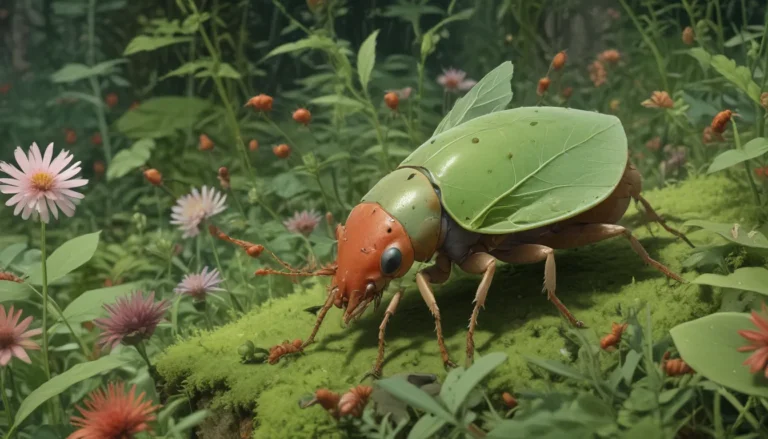The Complete Guide to Growing Missouri Evening Primrose

Oenothera macrocarpa
If you’re a fan of beautiful, low-maintenance plants, the Missouri evening primrose should be on your radar. This herbaceous flowering perennial, native to the southern and central United States, is as tough as it is stunning.
Its unique yellow blooms open in the evening, attracting night-flying insects and adding a touch of elegance to your garden. Despite its delicate appearance, the Missouri evening primrose can thrive in drought-prone soils and requires minimal care.
In this comprehensive guide, we’ll explore everything you need to know to cultivate and appreciate this lovely plant.
What Is the Missouri Evening Primrose?
The Missouri evening primrose belongs to the Onagraceae family and the Oenothera genus, which includes various species of sundrops and evening primroses. As its name suggests, this plant is native to Missouri and surrounding regions, where it grows in dry forest clearings, roadsides, and rocky bluffs.
With its lance-shaped green leaves and fragrant, yellow flowers, the Missouri evening primrose adds a touch of brightness to any landscape. Its unique blooming pattern, opening in the evening and closing the following morning, makes it a true standout in the garden.
Cultivation and History
While the Missouri evening primrose may not have the historical fame of some plants, it has attracted attention for its beauty and resilience. In fact, it received the Royal Horticultural Society’s Award of Garden Merit in 1993, a testament to its garden-worthiness.
Missouri Evening Primrose Propagation
To grow the Missouri evening primrose, you can propagate it from seeds or transplant established plants. Harvesting seeds from mature fruits in late summer or fall is a simple way to start new plants. Alternatively, transplanting existing specimens can expedite the growth process.
From Seed
Harvesting seeds from ripe fruit capsules and sowing them directly in the garden or after cold stratification indoors can yield beautiful Missouri evening primrose plants. Remember to provide well-draining soil and adequate spacing for optimal growth.
Via Transplanting
Transplanting established plants into your desired location can save time and effort. Ensure that the new planting site has suitable soil conditions and proper drainage to support the primrose’s growth.
How to Grow Missouri Evening Primrose Plants
To cultivate healthy Missouri evening primrose plants, consider their climate and exposure needs, soil requirements, and irrigation habits. These plants thrive in full sun but can tolerate light shade and lean soils.
Climate and Exposure Needs
Missouri evening primrose plants prefer USDA Hardiness Zones 3 to 7 and require full sun for optimal growth. Providing adequate sunlight and well-draining soil is essential for their health.
Soil Needs
Ensuring proper soil drainage and maintaining a slightly acidic to neutral pH level (6.0-7.0) are key factors for growing Missouri evening primrose successfully. Fertility is less critical, as these plants can thrive in lean soils.
Irrigation and Fertilizer Needs
While Missouri evening primrose plants are drought-tolerant, they benefit from occasional watering during dry spells. Avoid overwatering and excessive fertilization, as these plants do not require additional nutrients for healthy growth.
Growing Tips
- Ensure full sun exposure for optimal growth.
- Provide well-draining soil to prevent root rot.
- Water plants when the soil dries out to maintain moisture levels.
Pruning and Maintenance
Regularly deadheading spent blooms and removing unwanted seedlings can help maintain the health and appearance of Missouri evening primrose plants. These low-maintenance plants require minimal care to thrive in the garden.
Missouri Evening Primrose Cultivars to Select
Explore different cultivars of Oenothera macrocarpa to add variety to your garden. Cultivars like ‘Greencourt Lemon,’ ‘Lemon Silver,’ and ‘Shimmer’ offer unique characteristics and visual appeal, enhancing the beauty of your landscape.
Managing Pests and Disease
Missouri evening primrose plants are resistant to deer and rabbits and are not commonly affected by pests or diseases. However, overwatering and poor drainage can lead to root rot, a condition that can be prevented by providing suitable growing conditions and proper care.
Best Uses for Missouri Evening Primrose Flowers
From border fronts to rock gardens, Missouri evening primrose plants have versatile applications in the landscape. Their delightful flowers and sprawling form make them ideal for raised beds, cottage gardens, and native garden settings.
Quick Reference Growing Guide
- Plant Type: Herbaceous flowering perennial
- Flower/Foliage Color: Yellow/green
- Native to: Southern and central United States
- Hardiness (USDA Zones): 3-7
- Maintenance: Low
- Tolerance: Alkaline soil, deer, drought, light shade, poor soils, rabbits, various soil types
- Bloom Time: May-August
- Soil Type: Average to lean
- Exposure: Full sun
- Soil pH: 6.0-7.0
- Spacing: 12-18 inches
- Soil Drainage: Well-draining
- Height: 9-12 inches
- Spread: 12-18 inches
- Water Needs: Low
A Good Evening Indeed
Growing Missouri evening primrose plants can bring beauty and resilience to your garden. With minimal care requirements and unique flowering patterns, these plants offer a touch of elegance to any landscape. Whether you’re a novice gardener or a seasoned enthusiast, adding Missouri evening primrose to your outdoor space can enhance its beauty and appeal.
For more gardening tips and plant recommendations, stay tuned for additional guides and resources. Happy gardening!





